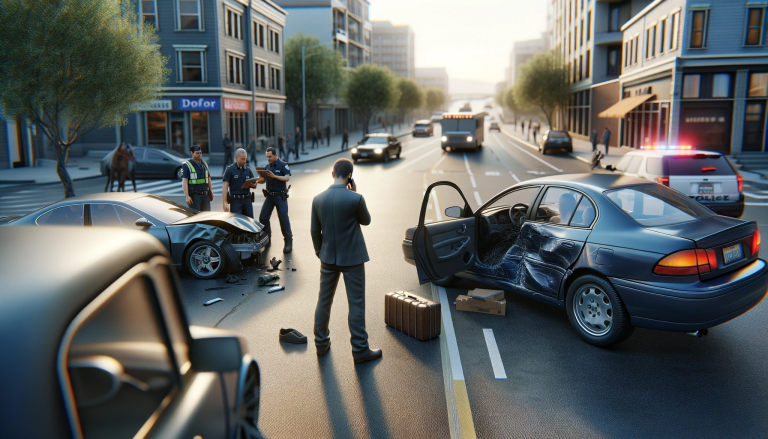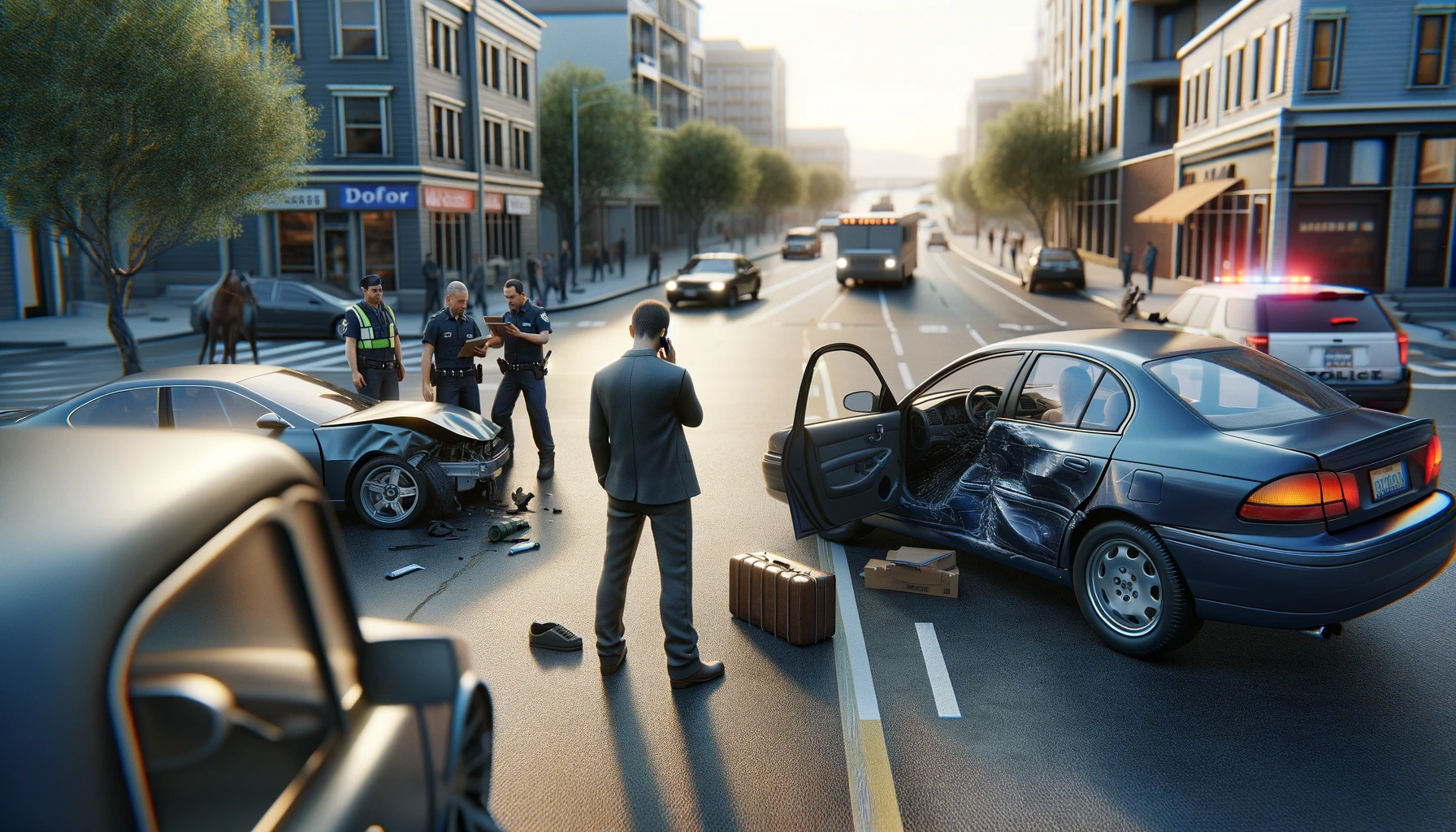Revolutionizing Road Safety: California's New Laws and Legal Resources for Auto Accidents
Introduction
Road safety is more crucial than ever. With the increasing number of vehicles on the road, California has introduced new laws to enhance safety and provide better support for
auto accident victims. This article will explore these laws, legal resources available, and the role of technology in revolutionizing road safety.
Understanding California's Road Safety Laws
Recent Changes and Updates
California's recent changes in road safety laws are designed to address the evolving challenges on the roads. These updates aim to enhance safety, reduce accidents, and ensure that both drivers and pedestrians are better protected.

The Role of Technology
New regulations emphasize the use of advanced technology, such as cameras, sensors, and automated systems, to monitor traffic and enforce speed limits more effectively. These technologies are being integrated into various parts of the traffic system to provide real-time data, improve response times, and enhance overall road safety.
Impact on Drivers and Pedestrians
These updates are geared towards protecting both drivers and pedestrians by:
- Reducing the likelihood of accidents through better traffic management and monitoring.
- Imposing stricter penalties for traffic violations to deter dangerous driving behaviors.
- Enhancing public awareness and education about the importance of road safety measures.
Key Provisions of the New Laws
- Speed Limits and Zones
The new laws include revised speed limits in high-risk areas, such as school zones and residential neighborhoods, to enhance safety. These changes are aimed at reducing the number of accidents in areas where there is a higher likelihood of pedestrian activity.
- Distracted Driving Regulations
California has tightened regulations on distracted driving by imposing higher fines for using mobile devices while driving. This includes not only texting or calling but also using apps or other electronic devices. The goal is to minimize distractions and encourage drivers to focus solely on the road.
- DUI and Substance Use Policies
Stricter DUI laws have been implemented, which include lower blood alcohol concentration limits and mandatory substance abuse programs for offenders. These measures are intended to reduce the incidence of impaired driving and improve overall road safety. The laws also cover the use of other substances, such as marijuana and prescription drugs, ensuring that drivers are not under the influence while on the road.
- Enhanced Enforcement and Penalties
The new laws include enhanced enforcement mechanisms and stricter penalties for violations. This includes increased fines, points on driving records, and potential license suspensions for repeat offenders. The aim is to create a strong deterrent against reckless and dangerous driving behaviors.
- Pedestrian and Cyclist Protections
Additional measures have been introduced to protect pedestrians and cyclists. These include new crosswalk regulations, dedicated bike lanes, and increased penalties for drivers who fail to yield to pedestrians. The laws also promote the use of reflective gear and proper lighting for cyclists to improve visibility and safety.
- Public Awareness Campaigns
The state has launched extensive public awareness campaigns to educate the public about the new road safety laws. These campaigns are designed to inform drivers, pedestrians, and cyclists about their responsibilities and the importance of adhering to the new regulations.
Legal Resources Available to Auto Accident Victims
Immediate Steps After an Accident
After an accident, it is crucial to take immediate steps to protect your rights and health. These initial actions can significantly impact the outcome of any legal claims you might pursue.
Gathering Evidence
Collecting evidence at the scene of the accident is essential for building a strong case. This includes:
- Taking photos of the accident scene, vehicle damage, and any visible injuries.
- Gathering contact information and statements from witnesses who saw the accident occur.
- Keeping a record of weather conditions, road conditions, and any other relevant details.
Contacting Authorities
Always contact the police to file a report. This official documentation will be crucial for any legal proceedings and insurance claims. Make sure to obtain a copy of the police report once it is available.
Finding Legal Representation
Choosing the right lawyer can make a significant difference in the outcome of your case. A specialized attorney can navigate the complexities of
auto accident laws and help you secure the compensation you deserve.
Choosing the Right Lawyer
When selecting a lawyer, consider the following:
- Look for attorneys who specialize in auto accident cases.
- Check their track record of successful cases and client reviews.
- Schedule a consultation to discuss your case and evaluate their approach.
Understanding Legal Fees
Be aware of the fee structure when hiring a lawyer to avoid unexpected costs. Legal fees typically fall into two categories:
- Contingency-Based Fees: The lawyer only gets paid if you win the case, taking a percentage of the settlement or award.
- Hourly Fees: You pay the lawyer for the time they spend working on your case, regardless of the outcome.
Filing a Claim
Knowing how to file a claim properly ensures that you can get the compensation you deserve. Follow these steps to streamline the process:
- Notify your insurance company about the accident as soon as possible.
- Provide all necessary documentation to support your claim.
- Cooperate with any investigations conducted by the insurance company.
Necessary Documentation
Gather all necessary documents to support your claim, including:
- Medical records detailing your injuries and treatment.
- Police reports that document the accident.
- Insurance information for all parties involved.
- Receipts for any expenses related to the accident, such as medical bills and vehicle repairs.
Timelines and Deadlines
Be mindful of the deadlines for filing claims to ensure you don't lose your right to compensation. Each state has a statute of limitations, which is the time frame within which you must file a lawsuit. Missing these deadlines can result in the forfeiture of your right to seek compensation.
The Role of Insurance in Road Safety and Accidents
Understanding Your Policy
Having a comprehensive understanding of your insurance policy is vital for adequate protection. Knowing the specifics of your coverage ensures that you are fully prepared in the event of an accident.
Types of Coverage
Ensure you have sufficient coverage by understanding the different types of insurance available:
- Liability Insurance: Covers damages and injuries you may cause to others in an accident.
- Collision Insurance: Pays for damage to your own vehicle resulting from a collision, regardless of fault.
- Comprehensive Insurance: Covers non-collision-related incidents such as theft, vandalism, and natural disasters.
Reading the Fine Print
Pay attention to the fine print to understand the limitations and exclusions of your policy. This includes:
- Specific conditions under which coverage is denied.
- Maximum payout limits for different types of claims.
- Deductibles and out-of-pocket expenses.
Claims Process
Filing an insurance claim can be complex, but knowing the process can simplify it. Understanding the steps involved can help you navigate the system more effectively.
Filing a Claim
When filing a claim, follow these steps:
- Report the accident to your insurer immediately.
- Provide all necessary documentation, including police reports, medical records, and photos of the accident scene.
- Keep detailed records of all communications with your insurance company and other involved parties.
Common Pitfalls to Avoid
Avoid common mistakes that can jeopardize your claim:
- Admitting Fault: Never admit fault at the scene of the accident. Fault will be determined by the insurance companies and legal authorities.
- Delaying the Claim Process: Report the accident and file your claim as soon as possible to avoid delays and potential denial of your claim.
- Incomplete Documentation: Ensure all required documents are submitted to support your claim fully.
Government and Non-Profit Resources
Various government and non-profit resources are available to support accident victims.
State Programs
California offers various state programs to support accident victims, including:
- Financial Assistance: Programs to help with medical bills, rehabilitation, and other expenses.
- Rehabilitation Services: Access to physical therapy and counseling services to aid in recovery.
Non-Profit Organizations
Several non-profits provide valuable resources and support for accident victims. These organizations offer a range of services, including:
- Advocacy and Support: Legal assistance, support groups, and advocacy for victims' rights.
- Educational Resources: Information and materials to promote road safety and prevent accidents.
Prevention and Education
Public Awareness Campaigns
Public awareness campaigns play a crucial role in promoting road safety by educating the public about the dangers of unsafe driving behaviors and the importance of following traffic laws.
Prominent Campaigns
Several high-profile campaigns have significantly impacted driver behavior:
- "Click It or Ticket": This campaign emphasizes the importance of wearing seat belts. Through strict enforcement and widespread publicity, it has successfully increased seat belt usage across the country.
- "Drive Sober or Get Pulled Over": Aimed at reducing drunk driving, this campaign combines law enforcement efforts with public education to decrease the incidence of driving under the influence.

Impact on Public Behavior
These campaigns have had a measurable impact on public behavior:
- Increased Seat Belt Usage: "Click It or Ticket" has led to a significant rise in seat belt use, contributing to a decrease in injuries and fatalities in accidents.
- Reduced Drunk Driving Incidents: "Drive Sober or Get Pulled Over" has helped lower the number of alcohol-related accidents and fatalities by raising awareness about the consequences of drunk driving.
School and Community Programs
Education at the grassroots level is essential for long-term change. By targeting young drivers and community members, these programs aim to instill safe driving habits early on.
Curriculum Integration
Integrating road safety into school curriculums helps educate young drivers about the importance of following traffic laws and safe driving practices. Topics covered can include:
- The dangers of distracted driving.
- The importance of wearing seat belts.
- The consequences of driving under the influence.
Community Workshops
Workshops and seminars in communities can raise awareness and teach safe driving practices. These events provide hands-on learning experiences and practical advice on various aspects of road safety, such as:
- Defensive driving techniques.
- Understanding and interpreting traffic signs and signals.
- Proper maintenance and inspection of vehicles to ensure safety.
Technological Innovations in Road Safety
Advanced Driver Assistance Systems (ADAS)
Technology is transforming vehicles with advanced safety features designed to prevent accidents and protect occupants.
Features and Benefits
Advanced Driver Assistance Systems (ADAS) include a range of features that enhance safety:
- Lane Departure Warnings: Alert drivers when they unintentionally drift out of their lane.
- Automatic Emergency Braking: Detects potential collisions and applies the brakes automatically to prevent or mitigate an impact.
- Adaptive Cruise Control: Adjusts the vehicle's speed to maintain a safe following distance from the car ahead.
Adoption Rates
More vehicles are being equipped with ADAS, making roads safer for everyone. As these technologies become more affordable and widespread, they are expected to become standard features in new vehicles.
Autonomous Vehicles
Autonomous vehicles represent the future of road safety by eliminating the human error factor in driving.
Current Status in California
California is at the forefront of autonomous vehicle testing and implementation. The state has established regulations and testing programs to facilitate the development of this technology.
Future Prospects
As technology advances, autonomous vehicles could drastically reduce accidents caused by human error. The widespread adoption of self-driving cars promises to transform road safety by:
- Reducing the number of collisions caused by distracted or impaired driving.
- Improving traffic flow and reducing congestion.
- Enhancing mobility for individuals who are unable to drive due to age or disability.
Conclusion
California's new road safety laws and the available legal resources are pivotal in reducing accidents and supporting victims. Staying informed and proactive about these changes can significantly enhance road safety for everyone.
Look for an attorney who has the right legal resources for your legal needs.
Contact us here on the
Warmuth Law website or through our hotline 888-517-9888.
Frequently Asked Questions (FAQ's)
1. What should I do immediately after a car accident in California?
Immediately after an accident, ensure everyone's safety, call the police, gather evidence, and contact your insurance company.
2. How can I find a reputable auto accident lawyer?
Look for a lawyer with experience in
auto accident cases, good reviews, and a clear fee structure.
3. What types of insurance coverage should I have for maximum protection?
Consider having liability, collision, comprehensive, and uninsured/underinsured motorist coverage for maximum protection.
4. Are there any financial assistance programs for accident victims in California?
Yes, California offers state programs for medical bills and rehabilitation services, and non-profits provide additional support.
5. How can technology improve road safety?
Technologies like ADAS and autonomous vehicles enhance safety by reducing human error and providing advanced warning systems.













